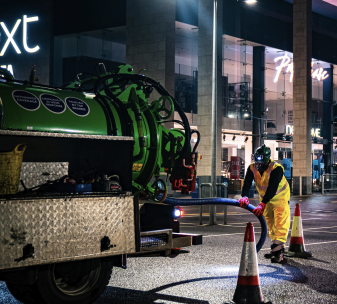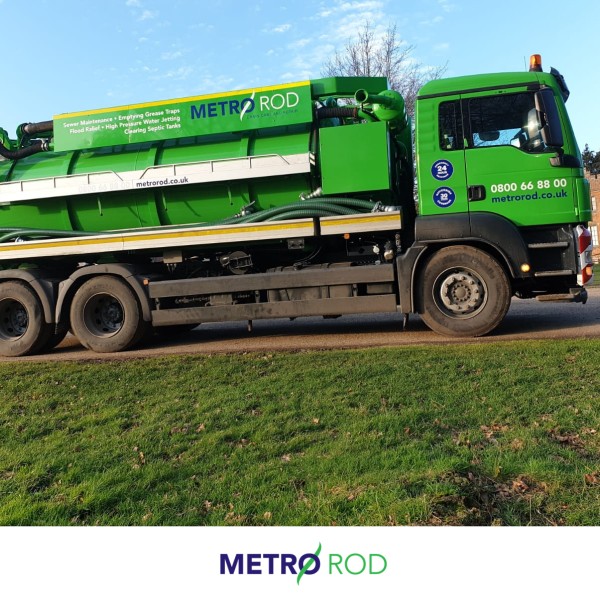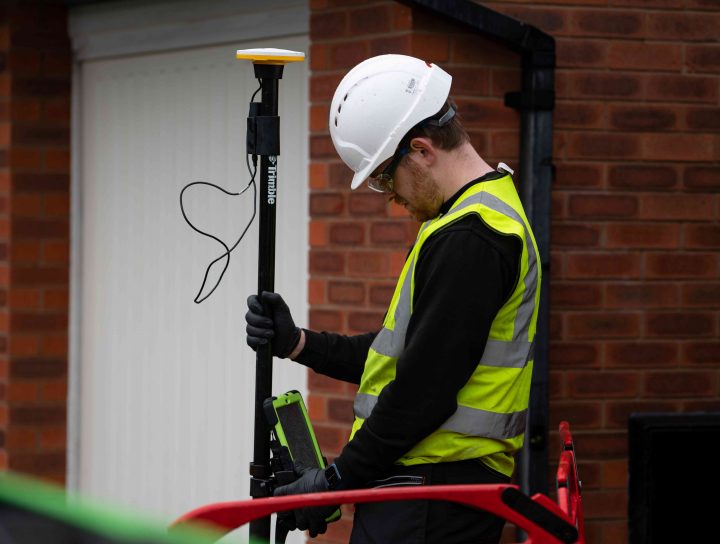What is a Cesspit?
The technical definition of a cesspit, if you were to look one up in the dictionary, is that they are on-site sanitation systems, designed for the temporary storage of human waste. What this means is that cesspits are often referred to as “holding tanks” for waste, storing it on site until it can be safely removed by a professional.
From a physical perspective, cesspits take the form of large tanks that are often stored under the ground, with a hatch on top in order to allow for the easy access and removal of waste. On average, if you own a cesspit, then it will need to be emptied between every six weeks to every twelve months.
What Is the Difference Between a Cesspit and a Septic Tank?
As drainage and waste specialists, one of the most common questions we get asked is “what is the difference between a cesspit and a septic tank?”
The good news is that, where there are some similarities that are hard to ignore, the differences between cesspits and septic tanks are actually very transparent.
First of all, what do they have in common? Well, both septic tanks and cesspits are used as an environmentally friendly solution to collect waste water and sewage waste from any property that is not connected to the main sewer system. This could be a domestic or commercial property, however, they are commonly used in rural areas. Likewise, both cesspits and septic tanks comprise of sealed underground units that are often placed on a property as a waste disposal method.
So, how do cesspits and septic tanks differ?
Cesspits and septic tanks work in a similar way; however, they do fulfil separate purposes. Septic tanks use a simple treatment system, allowing for waste water to drain away. What this means is that septic tanks end up treating and releasing waste water back into the environment, leaving only the surface scum and sediment behind.
Unlike septic tanks, cesspits are sealed and do not have an outlet for the waste they collect, nor do they treat the waste in any way. Cesspits are typically used where the ground is insufficiently porous for a septic tank to work.
How to Know If Your Cesspit Needs Emptying?
Cesspits are not designed to treat or remove the water that builds up inside of the tank, and so will consequently fill up a lot faster than septic tanks. This means they will need emptying more frequently as the waste that enters them is retained within the tank.
How regularly a cesspit needs to be emptied all depends on the size of your cesspit and the size of your household or organisation. That said, there are a few signs that your cesspit may be full and may need emptying.
If you have noticed that your drains are slower than usual, that there are odours coming from your drains, or that you have gurgling pipes then those may be signs that your cesspit needs emptying. Likewise, if you have noticed your sewer has backed up, then that is a clear sign your cesspit is full.
How Much Does It Cost to Empty Your Cesspit?
It probably doesn’t come as much of a surprise, but how much it costs to have your cesspit emptied varies depending on a few different factors. Those factors include how frequently you need it emptying (as an example), along with the size of the tank, as that does impact how long it takes to empty.
That being said, how much your cesspit costs to empty can vary depending on a large number of different elements, so if you have any queries you can speak to our engineers and request a quote today. Call us direct on 0800 66 88 00.
Why is Cesspit Maintenance Important?
It is essential that, if your property requires a septic tank or cesspit, you must clean it regularly and keep up to date with maintenance to both prevent future problems from arising and also to ensure you comply with regulations.
In the UK, it is possible to be fined if your cesspit is not maintained properly or if it leaks into the surrounding area, thus providing potential damage to the environment.
With your cesspit, it is also important to regularly check the level and not let it overfill. Letting your cesspit overfill is against regulations according to the 1936 Public Health Act.
Who Is Responsible for Maintaining a Cesspit Tank?
As well as a regular emptying schedule, cesspits need to be regularly serviced and maintained to keep them in safe working order. This is just as important for the safety of your property as it is for protecting the environment.
UK regulations are in place to ensure septic tanks and cesspits are well maintained. All properties which own a cesspit or septic tank must adhere to the 2020 General Binding Rules, which regulate sewage treatments and waste to protect the environment from pollution.
If you have a specific cesspit need at your property, please do not hesitate to contact us for support by calling us direct on 0800 66 88 00.
What Can I Do to Help Maintain My Cesspit?
The great news is that there are certain things you can do in order to help maintain your cesspit and keep it working harder for longer. Firstly, it is a good move to use biologically friendly household cleaning products. This means that there is nothing hazardous going down your drains when you regularly clean your sinks, toilets, or baths.
Secondly, avoid pouring any flammable, hazardous, or medical fluids down the tanks. Not only do they potentially harm the environment in case of a leak, but they are also bad for the coating of the tank.
Finally, keep a lookout for any of the signs that your cesspit may need emptying. If you suspect that it needs emptying then get it seen to as soon as possible to avoid any additional complications.
How Do You Safely Clean a Cesspit?
Cleaning a cesspit is a job for professionals trained in safe drainage and the removal of sewage. A drainage engineer will safely remove the waste, sucking it out of the cesspit by using a specialist tanker, and then transport it to a waste disposal facility.
With over 35 years’ experience in cesspit and septic tank emptying and cleaning, Metro Rod are one of the most trusted drainage companies in the UK. When using Metro Rod, you will receive reliable, hassle-free cesspit maintenance from a qualified network of engineers who are local to you. With access to the latest technology and equipment, we provide sewage tank services that are quick, effective and cause minimal disturbance.
For any unexpected problems, we provide emergency 24-hour callouts, as well as regular maintenance contracts which can help to avoid unnecessary messy situations.
If you have a septic tank or cesspit and would like a quote to empty the tank, get in touch with your local depot today or call us on 0800 66 88 00.

Talk to your local Metro Rod specialist
We are always happy to arrange a free site assessment and no obligation quotations for any work you might need. Alternatively, you can call our emergency hotline number on 0800 66 88 00
Get in touch Drainage Services
